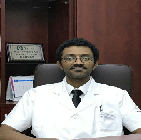
Yassir Abdelrahman Hag Elkhidir
Suihua Stomatological Hospital, China
Title: The osteogenic effect of photofunctionalization on gold nanoparticles applied on biomimetic titanium surfaces
Biography
Biography: Yassir Abdelrahman Hag Elkhidir
Abstract
Objectives: The aims of this study were to create a new surface topography using simulated body fluids (SBF) and gold nanoparticles (GNPs), to assess the osteogenic effect of the new surface on osteoblastic differentiation with and without UV photofunctionalization.
Materials & Methods: Commercially pure titanium plates (cpTiO2) were divided into six groups with different modifications. All 6 groups were acid etched with 67% sulfuric acid (H2SO4), four were immersed in simulated body fluid (SBF) for 24 hours to create a hydroxyapatite layer and two groups were treated with 13 nm gold nanoparticles (GNPs) for 24 hours. Half of the TiO2 plates were photofunctionalized (PhF) with UV light for 48 hours to be compared with the non-PhF ones. The main experimental groups were 3B which had H2SO4+SBF+GNPs+PhF and 2B which had the same treatment except for GNPs. Rat’s bone marrow stem cells (rBMSCs) were seeded into the plates and then CCK8 assay, cell viability (live/dead) assay, immunofluorescence and electron scanning microscopy were done after 24 hours. Gene expression analysis was done using real time quantitative PCR (qPCR) was done 1 week later to check for the mRNA expression of Collagen-1 (Col-1), Osteopontin (OPN) and Osteocalcin (OCN). Alkaline phosphatase (ALP) activity was performed after 2 weeks of cell seeding.
Results: Results were analyzed using Prism 5.0 statistical package. One-way analysis of variance was done for multiple comparisons and t-tests for individual comparisons. 3B which had all the treatment modalities showed the highest results and was compared to the closest group 2B. Optical density was almost 50% higher than the control group and significantly higher than 2B with a P value <0.0156) in 2B to 79% (p value <0.0147) in 3B. qPCR results showed the highest increase in the expression of osteogenic genes in 3B. When compared to 2B, 3B showed a significant increase in the expression of all the genes with P values of 0.0238, 0.0238 and 0.0038 for Col-1, OPN and OCN, respectively. 3B also showed just above 20% more increase in the ALP activity when compared to 2B.
Conclusion: We have created a novel hybrid micro-nano titanium surface. TiO2 plates were acid etched, coated with a hydroxyapatite layer using SBF to create biomimetic topography, photofunctionalized and seeded with 13 nm gold nanoparticles. This new surface has a remarkably more osteogenic potential than other surface treatments. The 13 nm GNPs did not show any cytotoxicity. Imunoflourescence and ESM results showed that it highly increased the rate of differentiation, proliferation, attachment, spreading and mineralization. PCR results showed enhanced gene expressions of Col-1, OPN and OCN osteogenic markers. ALP activity was also higher than the other groups. GNPs play an important role in cellular activity and growth. Photofunctionalizing GNPs highly increases its ostogenic capabilities. Our novel topography might be the most biocompatible titanium surface treatment up to date and it may have a good potential in further enhancing the osseointegration process and improving outcomes for maxillofacial and orthopedic patients.
